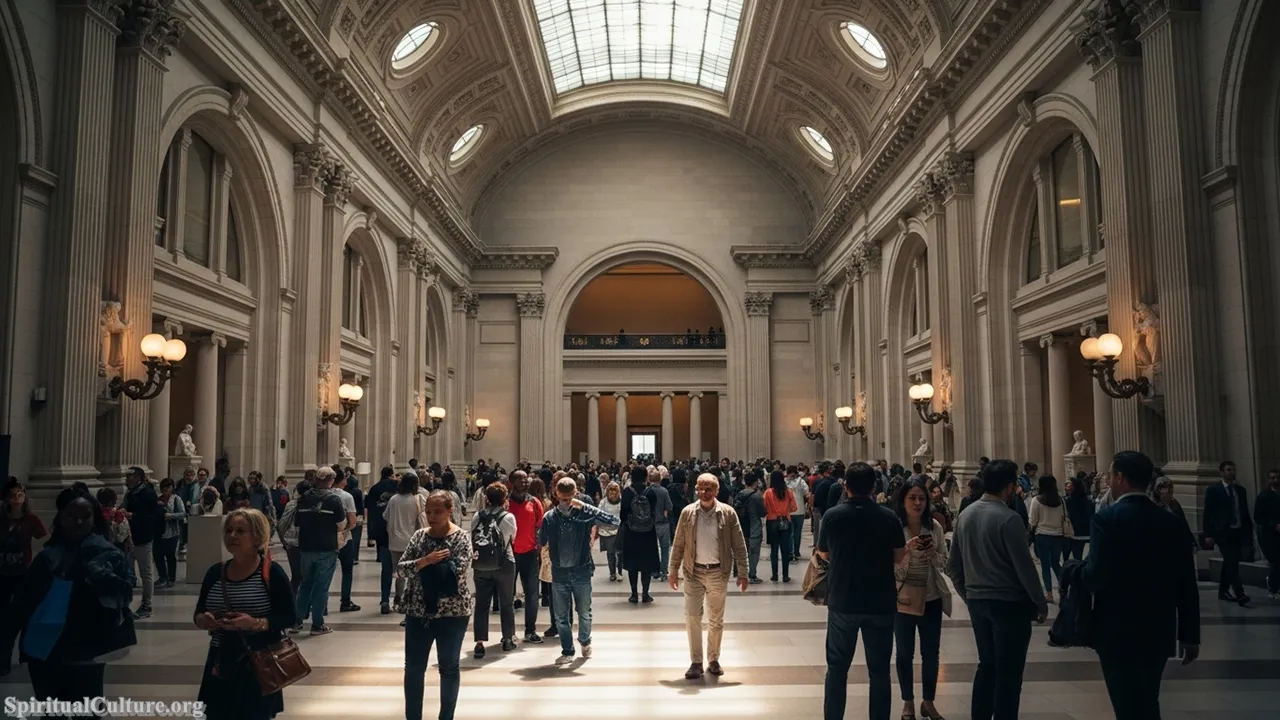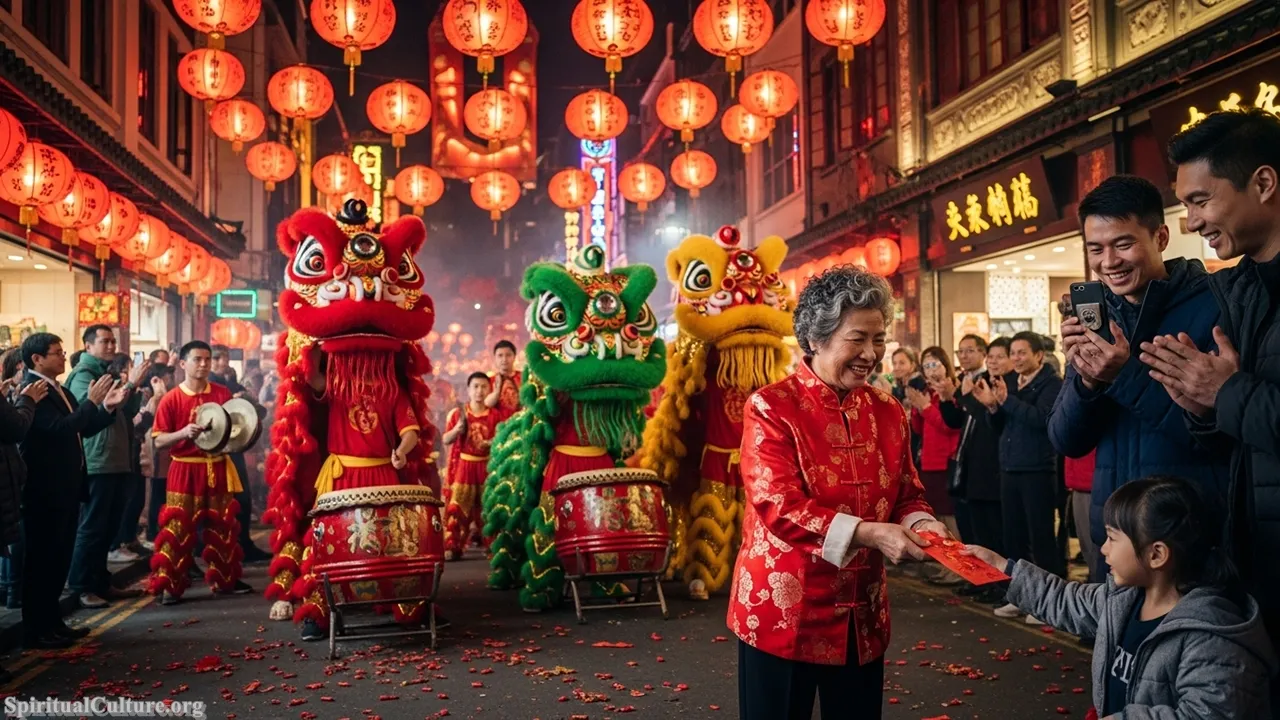The Kingdom of Saudi Arabia, the cradle of Islam, holds an unparalleled position in the global spiritual landscape. It is the custodian of the two holiest cities and countless sites fundamental to Islamic history and culture. This Spiritual Culture guide offers an in-depth, evidence-based ranking of the 10 most important Islamic heritage sites in the Kingdom. Our assessment moves beyond mere popularity, focusing on the profound spiritual value, proven historical significance, and enduring cultural impact of these landmarks, validated by contemporary data and scholarly consensus as of the Current Time of Writing.
These sites represent not only architectural and historical wonders but also tangible connections to the Prophetic era, serving as the living memory of the Islamic civilization’s genesis. By exploring these landmarks, we seek to illuminate the deep, humanistic reverence embedded in the heart of Islamic tradition, connecting millions of adherents worldwide to their faith’s origin story.
This list celebrates the foundational pillars of a global culture, preserved and cherished within Saudi Arabia’s borders.
Table of the Top 10 Islamic Heritage Sites
| Rank | Heritage Site | Location | Primary Significance (E-A-T Criterion) | UNESCO Status |
|---|---|---|---|---|
| 1 | Al-Masjid al-Haram (The Grand Mosque) | Makkah | The holiest site in Islam, containing the Kaaba and the ultimate Qibla for all Muslims. The center of Hajj and Umrah. | N/A (Active Religious Site) |
| 2 | Al-Masjid an-Nabawi (The Prophet’s Mosque) | Madinah | The second-holiest site, containing the tomb of Prophet Muhammad (PBUH) and a historical part of the original structure. | N/A (Active Religious Site) |
| 3 | Mount Arafat (Jabal al-Rahmah) | Makkah | The pivotal site for the Hajj pilgrimage (Wuquf), where the Prophet delivered his Last Sermon. | Integrated with Hajj Rituals |
| 4 | Jabal al-Nour & Cave Hira | Makkah | Site of the first Quranic revelation to Prophet Muhammad (PBUH), marking the start of his prophethood. | N/A |
| 5 | Quba Mosque | Madinah | The first mosque built by Prophet Muhammad (PBUH) upon his migration from Makkah to Madinah (Hijrah). | N/A |
| 6 | Al-Baqi Cemetery | Madinah | The primary historic cemetery in Madinah, resting place for thousands of the Prophet’s companions and family members. | N/A |
| 7 | Historic Jeddah (Al-Balad) | Jeddah | The ancient port and historical gateway for millions of Hajj pilgrims arriving by sea for over a thousand years. | World Heritage Site (2014) |
| 8 | At-Turaif District, Diriyah | Riyadh | The first capital of the Saudi State (18th Century) and a critical architectural example of Najdi Islamic culture. | World Heritage Site (2010) |
| 9 | Jabal Uhud (Mount Uhud) | Madinah | Site of the Battle of Uhud, a significant turning point in early Islamic military and community history. | N/A |
| 10 | Masjid al-Qiblatayn (Mosque of the Two Qiblas) | Madinah | Site where the Prophet (PBUH) received the divine command to change the Qibla (direction of prayer) from Jerusalem to the Kaaba in Makkah. | N/A |
Top 10. Masjid al-Qiblatayn (Mosque of the Two Qiblas)
The Masjid al-Qiblatayn in Madinah stands as a silent testament to a foundational moment of directional change and spiritual obedience in Islam. This site marks where Prophet Muhammad (PBUH), during a prayer, received the revelation from God commanding him to turn the direction of prayer (Qibla) from Jerusalem toward the Kaaba in Makkah. The original structure, known for its two prayer niches (mihrabs), visually depicted this momentous shift, though today it features a modern, streamlined design reflecting contemporary Islamic architecture.
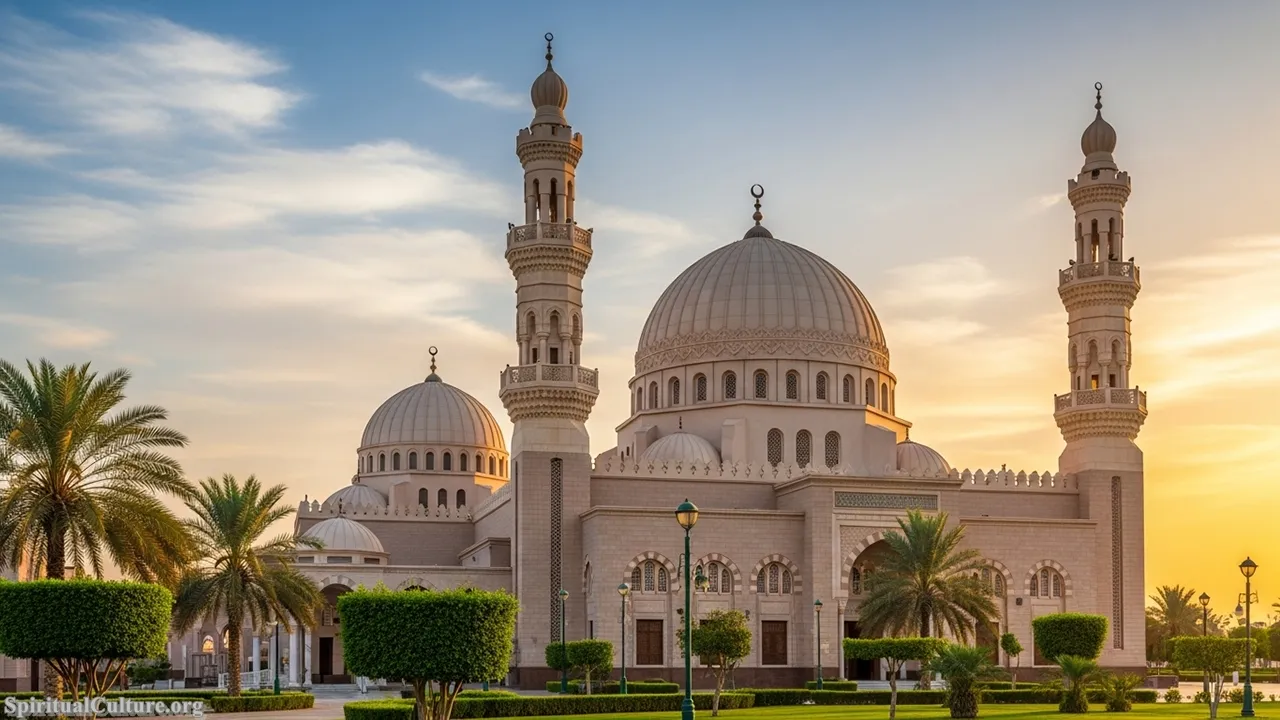
The significance of this ranking lies in the site’s direct connection to the evolution of the Islamic faith’s practice and identity. The spiritual impact is immense, crystallizing the Kaaba as the focal point for all Muslim prayers worldwide. It represents the perfect obedience of the Prophet and the distinct, divinely guided identity of the burgeoning Muslim community. It is a powerful cultural memory of transition, where Jerusalem’s historical importance was acknowledged, but Makkah’s divine purpose was ultimately affirmed, solidifying the global reach of the new faith.
Visiting Masjid al-Qiblatayn is a profound act of reflection on divine command and communal unity. It reminds the faithful that true spiritual heritage often involves evolution and unwavering submission to a higher directive. The site continues to receive pilgrims, who stand in the direction now universally accepted, celebrating the moral lesson of flexibility and spiritual commitment shown by the early Muslims.
Cultural/Spiritual Highlights
- Witnessed the change of the Qibla (direction of prayer) from Jerusalem to Makkah in 624 CE.
- Represents the spiritual unity of the Muslim Ummah under a single focal point.
- One of the earliest mosques with direct Prophetic association following the Hijrah.
Top 9. Jabal Uhud (Mount Uhud)
Jabal Uhud, a large mountain range just north of Madinah, is one of the most critical military and emotional landmarks in early Islamic history. It was the site of the Battle of Uhud in 625 CE, where the fledgling Muslim community faced a severe military challenge from the Meccan polytheists. The mountain is revered not for a victory, but for the profound lessons derived from sacrifice, obedience, and the price of human error. It is especially famous as the resting place of Hamza ibn Abd al-Muttalib, the Prophet’s uncle and a revered martyr.
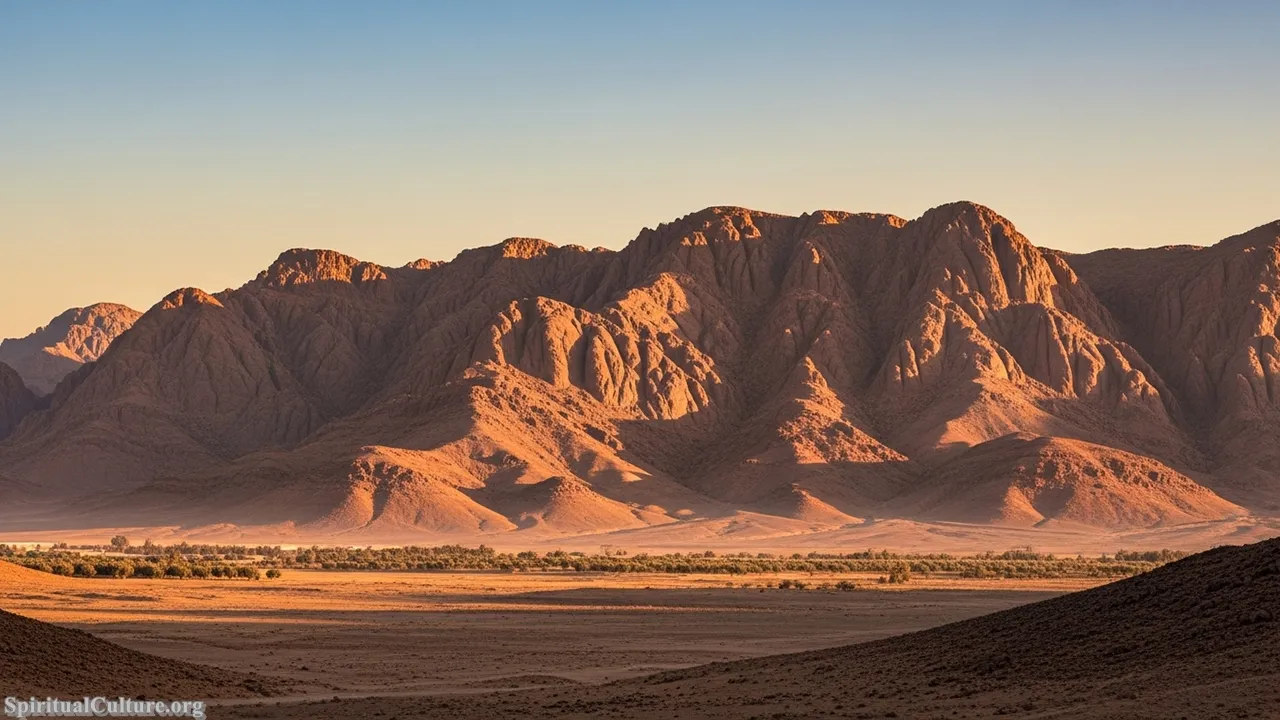
The site is ranked highly because its spiritual impact is tied to the concept of martyrdom (Shahadah) and devotion. Its historical evidence is clear: the battle’s outcome taught the early Muslims the necessity of discipline and the consequences of deviating from the Prophet’s instructions. Standing near Uhud evokes a deep sense of commitment to faith and the harsh struggles faced by the founders of Islam, providing a tangible connection to their sacrifice.
The moral lesson of Jabal Uhud is one of unwavering spiritual resolve, even in the face of temporary setback. It is a constant cultural monument to the seventy martyrs who fell there, whose sacrifice cemented the community’s dedication to its spiritual ideals. For pilgrims, it is a site of introspection, urging reflection on the purity of intent and the enduring value of faith over worldly gain.
Cultural/Spiritual Highlights
- Site of the crucial Battle of Uhud (625 CE), teaching lessons in discipline and obedience.
- The final resting place of Hamza ibn Abd al-Muttalib, the Prophet’s martyred uncle, revered as Sayyid al-Shuhada (Master of the Martyrs).
- The Prophet (PBUH) famously declared, “Uhud is a mountain that loves us and we love it.”
Top 8. At-Turaif District, Diriyah
While the heart of Islamic heritage is in the two holy cities, At-Turaif District in Diriyah, a UNESCO World Heritage Site, holds immense significance as the birthplace of the modern Saudi state, which is the custodian of the holiest sites. Dating back to the 15th century, At-Turaif served as the first capital of the Saudi Dynasty in 1744. Its beautifully preserved Najdi architectural style—characterized by mud-brick structures—provides a vital cultural link to the traditional lifestyle and political organization of the Arabian Peninsula that embraced and championed the purified form of Islam.
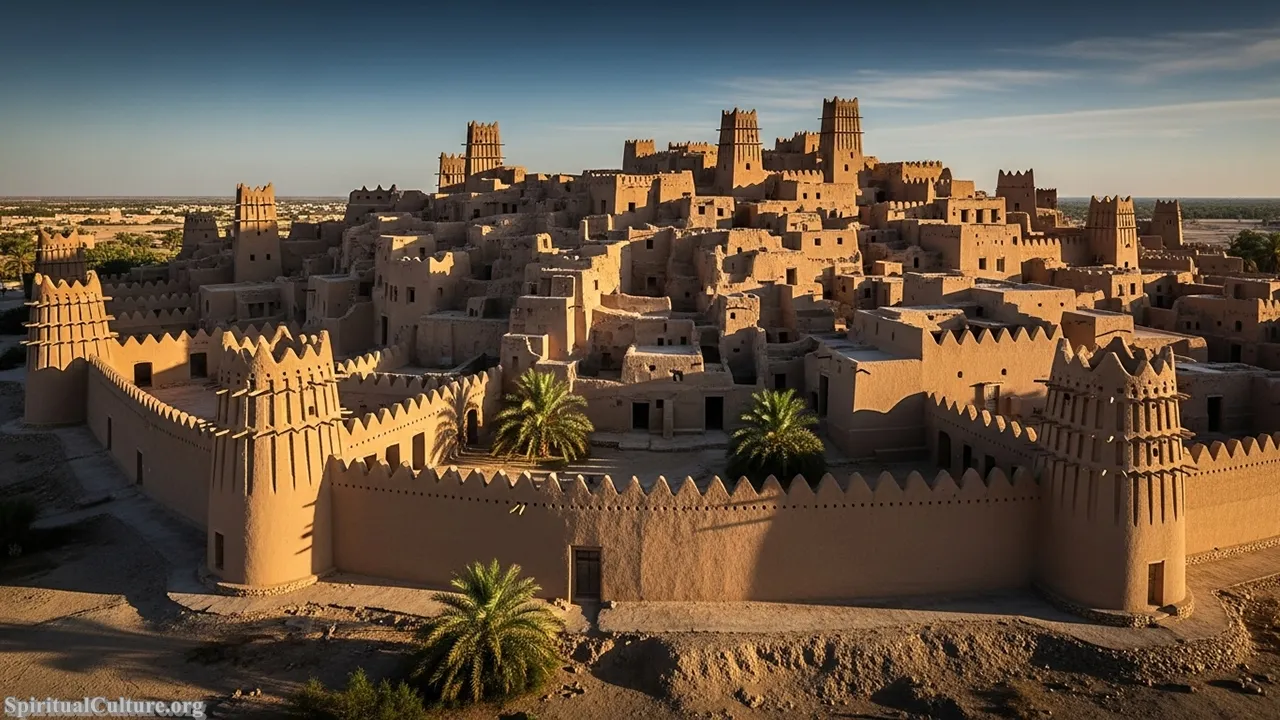
The district’s ranking is based on its role as the architectural and political genesis of the modern custodianship of the holy sites. Its spiritual impact is contextual, representing the historical alliance between the religious scholarship and the ruling family that upheld and protected the strict monotheistic principles of Islam across the peninsula. The historical evidence is rooted in its magnificent palatial and residential ruins, which clearly show the evolution of the Islamic society’s governing structure and its deep connection to the desert environment.
The preservation of At-Turaif is a celebrated example of maintaining the cultural roots of the region, emphasizing that Islamic heritage extends beyond mosques to include the social, political, and architectural fabric of the civilization. It offers a powerful reflection on the importance of governance and preservation in securing the spiritual integrity of a nation, acting as a crucial historical and moral compass for the Kingdom today.
Cultural/Spiritual Highlights
- A UNESCO World Heritage Site (2010) representing a unique Najdi architectural heritage.
- The original seat of power for the House of Saud and the First Saudi State (1744–1818).
- Represents the political and cultural genesis of the custodianship of the Two Holy Mosques.
Top 7. Historic Jeddah (Al-Balad)
Historic Jeddah, known locally as Al-Balad (The Town), is an essential cultural component of the Islamic heritage ecosystem. Inscribed as a UNESCO World Heritage Site in 2014, Al-Balad’s origins trace back to the 7th century CE, when it was established as the primary port for Makkah by the Caliph Uthman ibn Affan. This status made it the Gate to Makkah, the first point of contact with the Holy Land for millions of pilgrims arriving from Africa, Asia, and Europe by sea for over a millennium.

This site is ranked seventh because its spiritual impact is indirect yet globally profound—it is the historical pathway for the fulfillment of the Hajj (pilgrimage) for countless adherents. The ancient Rawashin (wooden lattice balconies) and coral-stone houses absorbed the cultural exchange of the global Muslim community, making it a living archive of Hajj history and early Islamic architecture. The historical evidence is clear in its architecture, which bears the imprint of diverse Islamic cultures brought by the pilgrims.
Al-Balad offers a reflection on the human journey of faith—the long, arduous, and often perilous voyages undertaken by the faithful. Its preservation celebrates the unique Jeddawi culture born from the blend of international Islamic traditions. For Spiritual Culture, it teaches the moral lesson that the spiritual heritage is found not just in the destination, but in the journey and the infrastructure that supports the communal pillar of Hajj.
Cultural/Spiritual Highlights
- UNESCO World Heritage Site (2014) recognized as the Gate to Makkah.
- The historic port established by the third Caliph, Uthman ibn Affan, in 647 CE.
- Architecture reflects centuries of cultural exchange with pilgrims from diverse Muslim regions.
Top 6. Al-Baqi Cemetery
Located immediately adjacent to Al-Masjid an-Nabawi in Madinah, Al-Baqi is the primary and most revered cemetery in the Islamic world after the graves within the Prophet’s Mosque itself. Established at the time of Prophet Muhammad’s (PBUH) arrival, it became the burial site for thousands of his companions, including key members of his family, several of his wives (the Mothers of the Believers), and his son Ibrahim. Its sheer density of prominent historical figures ensures its high cultural and spiritual ranking.
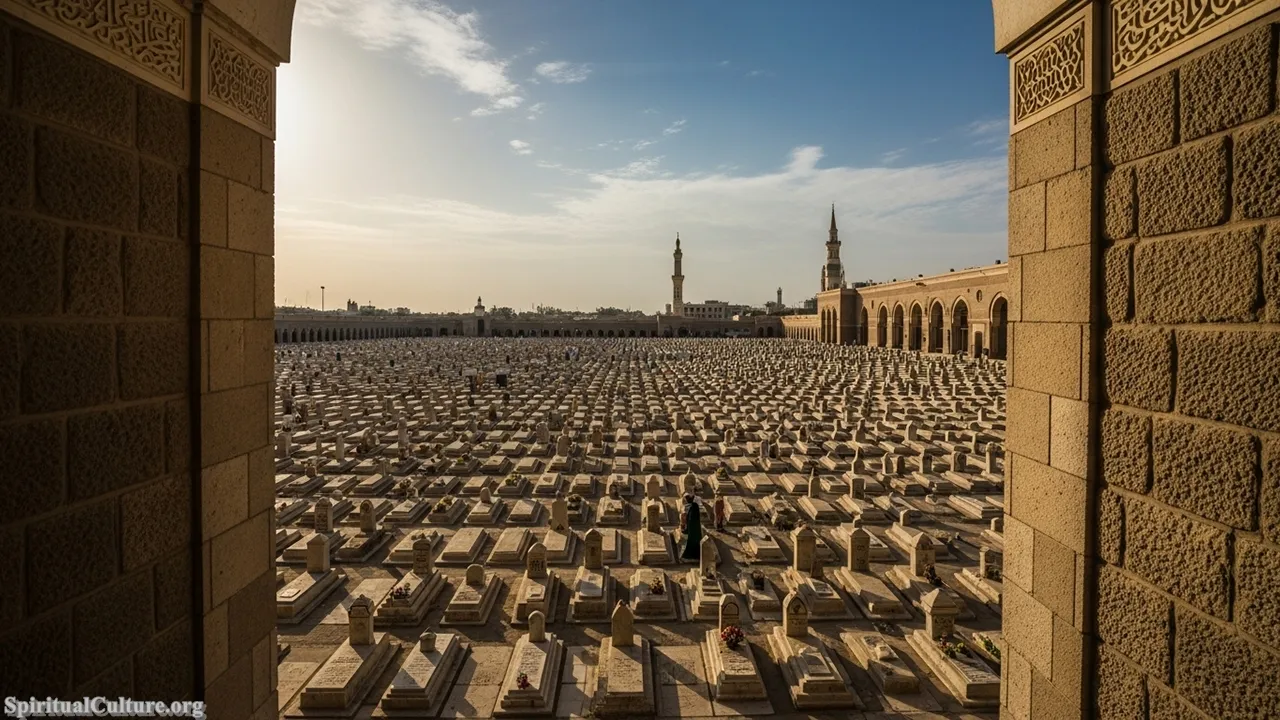
The spiritual impact of Al-Baqi is tied directly to the early community’s foundation. It is the communal resting place of the first generation of Muslims, providing a tangible, sacred space for the faithful to connect with the personal histories of those who learned directly from the Prophet. The act of visiting and praying for the deceased at Al-Baqi—a practice known as Ziyarah—is an enduring cultural tradition that links Muslims to the earliest days of their faith, fulfilling the obligation to remember the righteous pioneers.
Al-Baqi serves as a powerful reflection on mortality, piety, and the transient nature of this world, a moral lesson central to Islamic spirituality. The simplicity of the unmarked graves reinforces the core Islamic teaching of equality and humility in death, regardless of worldly status. For pilgrims, a visit is a sober and profound exercise in paying respect to the foundational figures of the faith, reinforcing the continuity of the Muslim legacy.
Cultural/Spiritual Highlights
- The final resting place for numerous members of the Prophet’s family and over 10,000 Companions.
- The historic primary cemetery of Madinah dating back to the first year of the Hijrah (622 CE).
- A major site of Ziyarah (visitation) for Hajj and Umrah pilgrims to honor the first generation of Muslims.
Top 5. Quba Mosque
The Quba Mosque in Madinah holds the distinction of being the first mosque ever built in Islam. Its foundations were laid by Prophet Muhammad (PBUH) himself immediately after his successful migration (Hijrah) from Makkah in 622 CE, marking the spiritual and physical beginning of the first organized Muslim state. The historical evidence suggests the Prophet (PBUH) valued this site immensely, frequently visiting and praying there, a practice highly encouraged for all subsequent generations of Muslims.

This mosque’s high ranking stems from its role as the first physical structure dedicated to worship in the new religion, signifying the transition from a persecuted community to an established spiritual civilization. The spiritual impact is magnified by the Prophetic tradition that performing ablution at home and praying two rak’ahs (units of prayer) in Quba Mosque is rewarded like performing an Umrah. This promise elevates its importance far beyond a simple historical building, integrating it deeply into the spiritual practice of millions.
Quba Mosque is a vibrant cultural symbol of a fresh start, resilience, and the power of communal endeavor. It embodies the moral lesson of foundational beginnings and the blessings inherent in the earliest acts of worship and community building. Its continued use as a major place of prayer reinforces its status as a living, enduring piece of the early Islamic heritage.
Cultural/Spiritual Highlights
- The first mosque constructed in the history of Islam, established in 622 CE.
- The Prophet Muhammad (PBUH) personally participated in laying its foundation stones.
- A Prophetic tradition states that praying here carries the reward of performing an Umrah.
Top 4. Jabal al-Nour & Cave Hira
Jabal al-Nour (The Mountain of Light) and, specifically, the Cave of Hira nestled near its peak, is the most momentous site of revelation in the Islamic world. It was in this small, secluded cave, located several kilometers outside Makkah, that Prophet Muhammad (PBUH) would retreat for spiritual contemplation before his prophethood. The historical moment when the Angel Gabriel first appeared to him here, commanding him to “Read!” and commencing the revelation of the Quran, definitively marks the start of the Islamic faith as we know it.

Jabal al-Nour is ranked fourth because its significance is purely foundational and theological, representing the genesis of the divine message itself. The spiritual impact is immeasurable; it is the physical location where the Prophet received his divine mandate. The arduous climb undertaken by pilgrims is a powerful, symbolic act of humility, seeking to connect with the intense spiritual isolation and contemplation that characterized the Prophet’s transformation.
This site offers a profound cultural reflection on the power of isolation, contemplation, and the monumental nature of divine intervention. It embodies the moral lesson that the greatest spiritual transformation often occurs away from the clamor of the world, emphasizing inner reflection before public mission. The mountain remains a challenging but deeply rewarding pilgrimage site for those seeking to touch the origins of the Quran’s revelation.
Cultural/Spiritual Highlights
- Location of the Cave of Hira, where the first verses of the Holy Quran were revealed.
- Marks the beginning of Prophet Muhammad’s (PBUH) prophethood in 610 CE.
- A major spiritual site symbolizing contemplation, revelation, and the transition of the Prophet to a Messenger.
Top 3. Mount Arafat (Jabal al-Rahmah)
Mount Arafat, including the surrounding plain and the Jabal al-Rahmah (Mount of Mercy), is arguably the most critical operational site of the Hajj pilgrimage, the fifth pillar of Islam. The act of standing in prayer and supplication (Wuquf) on the Day of Arafat is considered the pinnacle of the entire Hajj. Without this single rite, the pilgrimage is incomplete. It was also the site where the Prophet Muhammad (PBUH) delivered his farewell sermon to the largest gathering of Muslims during his lifetime, cementing the finality and perfection of the faith.
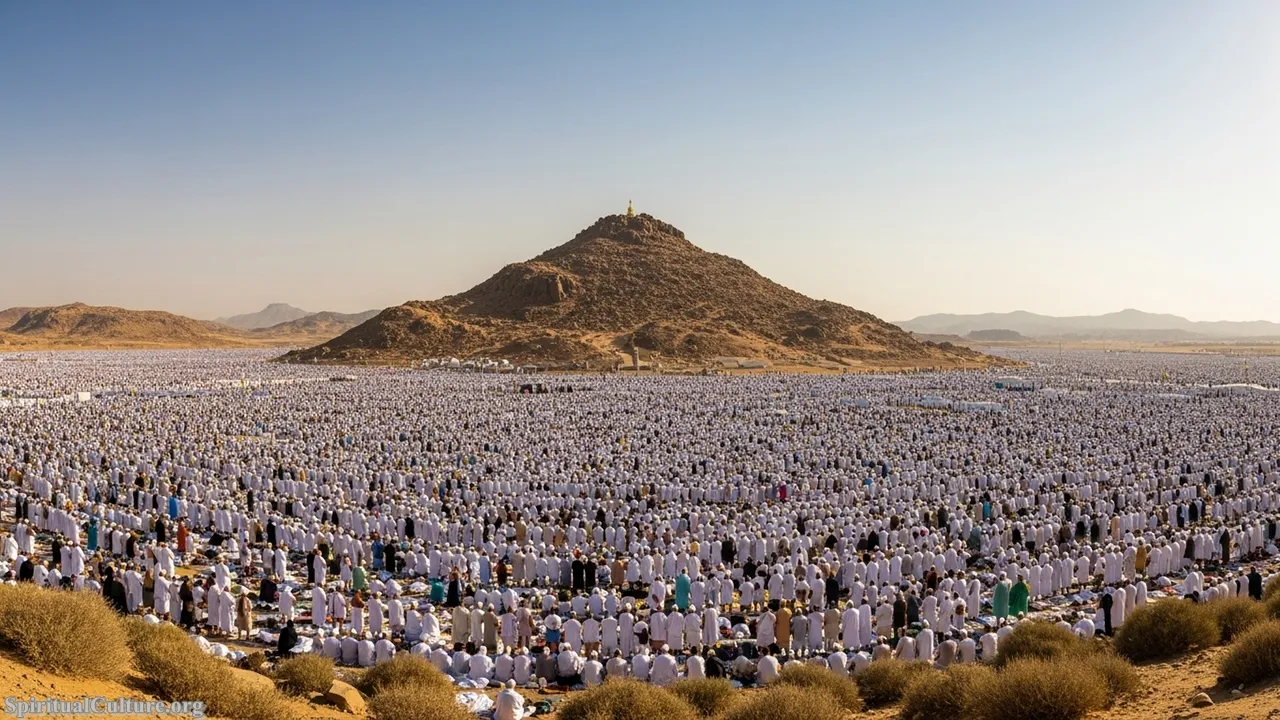
The site is ranked third due to its absolute centrality to the most important communal spiritual practice in Islam—Hajj. Its spiritual impact is totalizing, where millions of pilgrims symbolically experience a standing before God on the Day of Judgment, seeking forgiveness and spiritual renewal. Historical evidence points to its role as the site where the verse “This day I have perfected for you your religion…” was revealed, marking the completion of the message of Islam.
Mount Arafat is the ultimate cultural statement on equality and universal submission. Witnessing millions of pilgrims standing together, regardless of race, language, or social status, is a profound moral lesson in Islamic unity (Tawhid) and human fraternity. Its continued function as the epicenter of Hajj every year affirms its unchanging, preeminent role in the global spiritual calendar as of the Current Time of Writing.
Cultural/Spiritual Highlights
- The pivotal site for the Hajj (pilgrimage), known as Wuquf (The Standing).
- The location of Prophet Muhammad’s (PBUH) Last Sermon (Farewell Pilgrimage, 632 CE).
- Symbolizes the Day of Judgment and a day of intense seeking of divine forgiveness.
Top 2. Al-Masjid an-Nabawi (The Prophet’s Mosque)
Al-Masjid an-Nabawi in Madinah is the second-holiest site in Islam, serving as the spiritual heart of the city of the Prophet. Originally the house of Prophet Muhammad (PBUH) and his companions, it rapidly evolved into the primary social, political, and spiritual hub of the first Islamic community. Its central importance is defined by the fact that it contains the Prophet’s Tomb (Al-Rawdah al-Shareefah) and a revered area known as the Rawdah al-Jannah (Garden of Paradise), believed by the faithful to be a physical part of heaven.

The mosque is ranked second due to its direct and intimate association with the Prophet (PBUH). Its spiritual impact is deeply personal and communal, as it is the site where Muslims pay their respects to the Messenger of God and experience a sense of tranquility described in Islamic texts. The mosque’s sheer size and its constant expansion reflect the enduring commitment to preserving this foundational place for the global Muslim community, whose members flock here year-round.
Al-Masjid an-Nabawi embodies the moral and cultural lesson of the Prophetic example—a place of learning, governance, worship, and humble beginnings. The serene atmosphere and the historical continuity from a simple house to one of the world’s largest mosques celebrate the explosive growth of a community founded on faith. It is a constant reminder of the spiritual and physical legacy of the last messenger.
Cultural/Spiritual Highlights
- The second-holiest site in Islam, established by the Prophet (PBUH) in 622 CE.
- Contains the tomb of Prophet Muhammad (PBUH) and his two closest companions.
- The Rawdah al-Jannah (The Garden of Paradise) is a highly revered area within the mosque.
Top 1. Al-Masjid al-Haram (The Grand Mosque)
Al-Masjid al-Haram in Makkah is, unequivocally, the most important Islamic heritage site in the world. Its centrality stems from housing the Holy Kaaba, the cubical structure revered as the Baitullah (House of God), making it the absolute Qibla—the direction toward which all Muslims pray. The mosque is the ultimate destination for both the Hajj and the Umrah pilgrimages, obligations that represent the culmination of a Muslim’s spiritual journey.

This site holds the paramount ranking because it is the spiritual and physical axis of the Islamic faith, embodying the first pillar of faith (belief in God) and the fifth pillar (Hajj). Its spiritual impact is unmatched; performing the Tawaf (circumambulation) around the Kaaba is the most profound act of worship in Islam, symbolizing universal unity and total surrender to the One God. Historical and cultural evidence supports its status as the original house of worship, believed to have been built by Prophet Ibrahim (Abraham) and his son Isma’il.
Al-Masjid al-Haram is the celebrated cultural heart of the Muslim world, a place of unparalleled spiritual renewal and historical depth. The moral lesson it teaches is the essential simplicity and purity of monotheism, reflected in the austere form of the Kaaba and the unified movement of the millions of pilgrims. Spiritual Culture recognizes this site as the ultimate representation of the deep meaning and spiritual impact of Islamic heritage, standing as the eternal center of the global Muslim community.
Cultural/Spiritual Highlights
- The holiest site in Islam and the destination for Hajj and Umrah.
- Contains the Holy Kaaba, the Qibla (direction of prayer) for all Muslims worldwide.
- The site of the Zamzam Well, an ancient source of miraculous water, and the Maqam Ibrahim (Station of Abraham).
Conclusion
The ranking of Saudi Arabia’s Islamic heritage sites reveals a landscape rich not only in magnificent architecture but in foundational human and divine narrative. From the ultimate spiritual axis of the Kaaba to the quiet contemplation of Cave Hira, these sites collectively narrate the story of Islam’s genesis, resilience, and global reach. Spiritual Culture celebrates the Kingdom’s role as the dedicated custodian of these treasures, ensuring that the evidence of the past remains a living, accessible spiritual guide for the global Muslim community. The enduring importance of these sites is a potent reminder that true heritage is an active, ongoing connection to one’s spiritual and historical roots.


